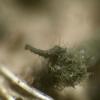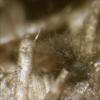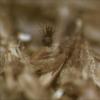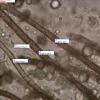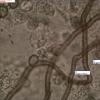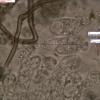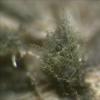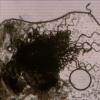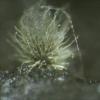
20-12-2025 23:08
Patrice TANCHAUDBonsoir, récolte sur sol sablonneux dans l'arri�

20-12-2025 15:47
Mirek GrycHi.These grew on pine wood that was heavily covere

18-12-2025 21:17
Pol DebaenstThe identification took me to Byssonectria deformi

15-12-2025 07:09
 Danny Newman
Danny Newman
indet. Rutstroemiaceae sp. on unk. fallen leavesMc

19-12-2025 10:10
Patrice TANCHAUDBonjour, récolte réalisée en milieu dunaire, a

18-12-2025 17:23
 Bruno Coué
Bruno Coué
Bonjour,je serais heureux d'avoir votre avis sur c

18-12-2025 18:07
Margot en Geert VullingsThese plumes were found on rotten wood.They strong

17-12-2025 18:35
 Michel Hairaud
Michel Hairaud
Bonjour à tous/Hi to everyone I am passing along
unknown chaetomium
Joop van der Lee,
13-11-2013 14:20
 Found on horse dung also found on sheep dung in the same area.
Found on horse dung also found on sheep dung in the same area.Perithium is covered with non septated, non crustated, thickwalled curled hairs 2.7u8-3.48 um wide
Upper part has rigid stiff and curled, septated thick walled hairs 4.27-5.22 um wide.
Asci: 8-spored, 42.39x11.24 um
Spores: lemon shaped, 8.51-9.38xs7.41-7.96x6.32-6.91 um
When young they have an olive-green colour.
It also has a funnel to assist in releasing spores, when process is completed only the fruitbody with rigid non curling hairs remain.
Norbert Heine,
13-11-2013 17:45

Re : unknown Chaetomium
Hello Joop,
species of the genus Chaetomium are difficult to determinate!
It needs a lot of literature like Arx et al - The Ascomycete Genus Chaetomium, 1986 or Doveri - An update on the genus Chaetomium, PdM 29, 2008.
And it needs a lot of experience and patience.
Even then the determination is not easy!
There are some species with nearly the same spore size and similar hairs!
Maybe that your species is Ch. crispatum, but Ch. convolutum is also an option.
The common Ch. bostrychodes has similar, but slightly smaller spores.
An updated world wide key you can find in the latest work by Francesco Doveri.
http://www.mycosphere.org/pdfs/MC4_4_No17.pdf
Best wishes
Norbert
species of the genus Chaetomium are difficult to determinate!
It needs a lot of literature like Arx et al - The Ascomycete Genus Chaetomium, 1986 or Doveri - An update on the genus Chaetomium, PdM 29, 2008.
And it needs a lot of experience and patience.
Even then the determination is not easy!
There are some species with nearly the same spore size and similar hairs!
Maybe that your species is Ch. crispatum, but Ch. convolutum is also an option.
The common Ch. bostrychodes has similar, but slightly smaller spores.
An updated world wide key you can find in the latest work by Francesco Doveri.
http://www.mycosphere.org/pdfs/MC4_4_No17.pdf
Best wishes
Norbert

